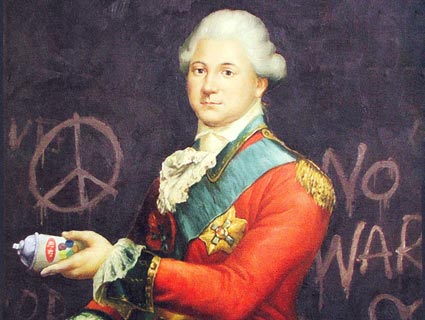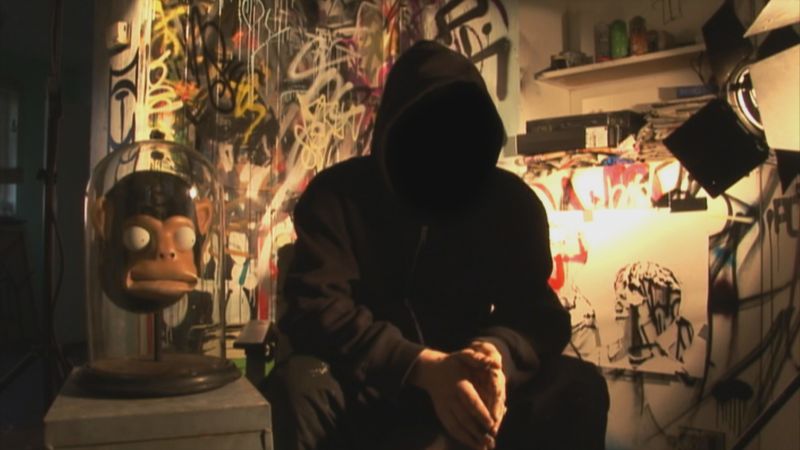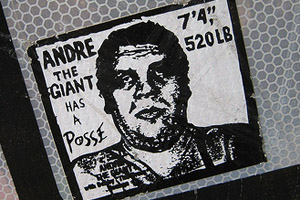
<a target="_blank" href="http://www.flickr.com/photos/janslangen/5556327199/">Jan Slangen</a>/Flickr
Featuring works by graffiti artists like Banksy and Shepard Fairey, the “Art in the Streets” exhibit at the Museum of Contemporary Art in Los Angeles has been billed by its curators as “the first major U.S. museum survey of graffiti and street art.” The exhibit has drawn record attendance for the museum, each one garnering a $10 general admission fee.
The irony that a museum is charging people money to look at an art form that is usually seen for free hasn’t been lost on Banksy, who stepped in to sponsor free admission to the exhibit every Monday until the show closes on August 8. “I don’t think you should have to pay to look at graffiti. You should only pay if you want to get rid of it,” Banksy told MOCA’s Curve blog. But his statement reveals a conflict of interest that has marked his career from the beginning: The artist, whose graffiti works already sell for upwards of $200,000 at elite art houses like Sotheby’s, will undoubtedly benefit financially from the exhibit.
A well-known British street artist who keeps his identity secret to evade several arrest warrants for vandalism (and possibly to further his intrigue), Banksy is known for being a contradictory figure whose antics often teeter between the serious and the absurd. Watching his 2010 documentary, Exit Through the Giftshop, and reading about the hype surrounding the film’s Oscar nomination, you have to wonder: Just who is Banksy trying to prank?
Banksy made a name for himself by glamorizing his rebel status as he mocked the art establishment. In the beginning, it was a rebellious—and gleeful—artist’s statement when his art appeared in a museum, as it did when he pranked the Louvre and stuck his own framed artwork on its walls when guards weren’t watching. (See video below.) Now, as legitimate and sanctioned museum pieces, his work has become a lucrative part of the elite art world at which he thumbs his nose. Was this his point all along? Banksy’s elusiveness makes it hard to find an answer, so we’re left wondering, “Now that he’s been welcomed into the museum, what’s next for Banksy?”













